Roaming Market by Aberrant Architecture
A tiny mobile performance venue based on sixteenth century market stalls and Roman fortune tellers will be appearing around the Lower Marsh area of Waterloo in London this summer.
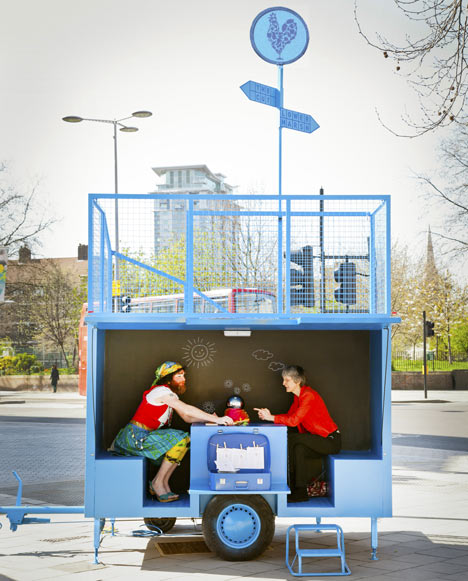
Designed by London Studio Aberrant Architecture, the bright blue folly incorporates a rooftop platform, a covered seating area and a signpost printed with a chicken.
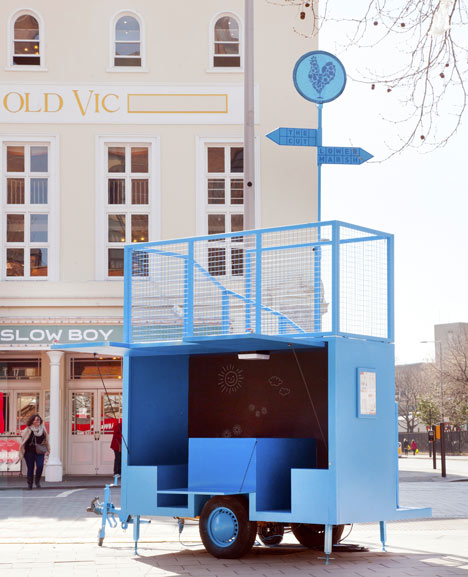
Constructed from steel and mounted on a trailer chassis, the maneuverable stall is intended to recall the site's history as a bustling market area renowned for fortune tellers, mystics and peep shows.

As part of the design process, Aberrant Architecture examined Hugh Alley's sixteenth century text A Caveat for the City of London, which features drawings of market totems around which traders used to gather.

"We really wanted to challenge the idea of how a sign could become a physical experience and weave together the richness of the area's past with the street's current character," explains Kevin Haley, co-founder of Aberrant Architecture. "By reimagining historic market structures to reflect the unique character, noise, and atmosphere of the present day market the new stall marks the next step in Lower Marsh's story."
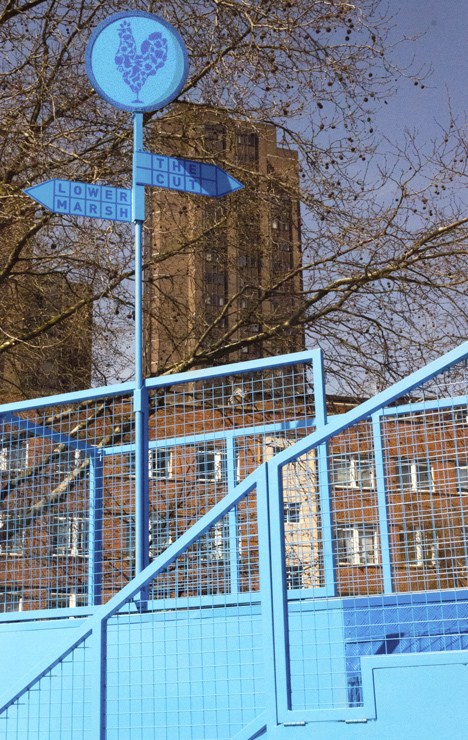
The stall features a steel staircase that leads to a rooftop plinth on which installations and events can be held, whilst a cubbyhole beneath combines seating with a built-in chess board.

A signpost protrudes from the roof with a graphic chicken mounted to its tip as a reference to Roman times when chickens were used by fortune tellers to predict the future.
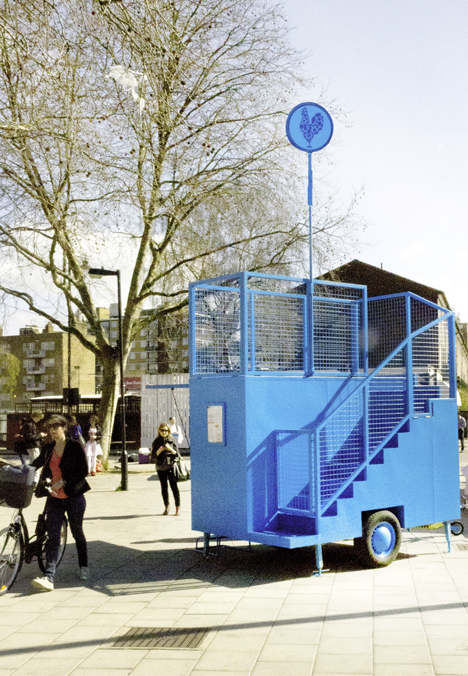
Collapsable steel balustrades allow the stall the be lowered in height and stored away easily.

The Roaming Market was commissioned by Waterloo Quarter Business Improvement District as part of Waterloo's Portas Pilots project, which aims to regenerate the Lower Marsh and The Cut areas of the district. We previously featured Mary Porta's review of the future of high streets.
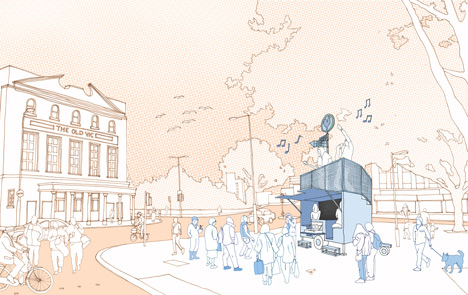
The stall's debut appearance was during the English festival of St George earlier this year with a party involving Morris Dancers, musicians, a fortune teller and a fool.
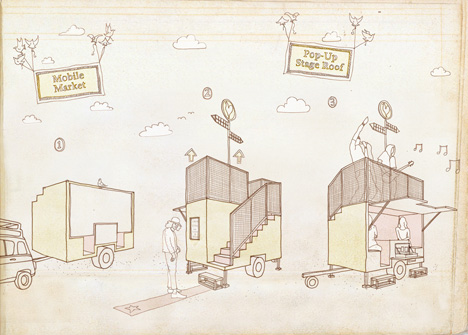
The Roaming Market's next appearance will be at the Waterloo Quarter Food Festival which runs from June 27 to July 31.
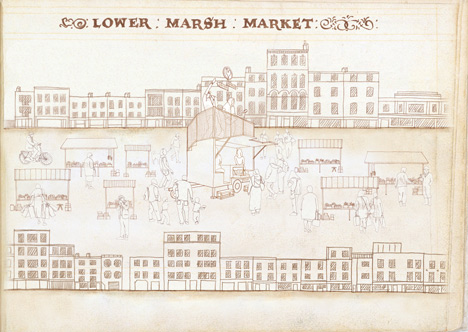
This isn't the first time Aberrant Architecture have designed a travelling folly-like structure. During Clerkenwell Design Week last year the studio unveiled a tiny mobile theatre with chimneys made from coal scuttles.
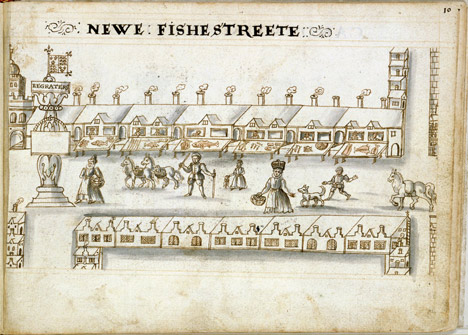
See more stories about Aberrant Architecture »
Here's some more information about the project:
Waterloo Quarter Business Improvement District (BID) has commissioned aberrant architecture to design a new 'roaming market' stall for Lower Marsh Market in Waterloo, London. Inspired by 'totem' structures found on London's historic street markets and Lambeth's rich history of fortune tellers and mystics the new structure will act as a local information point. Once it has arrived at its site it will unfold into a mutli-functional stall incorporating a covered seating area with built-in chess board, a stage on the roof for hosting events and performances and a 'chicken' signpost for guiding people around the local area.
It is hoped the new structure will continue the rejuvenation of the Lower Marsh market, which was re-launched in 2011, by acting as a portable anchor around which new satellite markets can be created and as a promotional and signage tool helping to draw people through the local area. The innovative stall is being delivered as part of Waterloo Quarter's 'Portas Pilot' project for Lower Marsh and The Cut, and is supported by the Mayor of London and delivered by Waterloo Quarter BID in collaboration with the London Borough of Lambeth.
The stall is inspired by drawings of 'totem' structures found in Hugh Alley's idiosyncratic 16th century 'A Caveatt for the City of London' which were used as markers around which different traders assembled, often representing the part of the country where the produce was from. In addition the stall's design is influenced by Lambeth's history as a market area renowned for fortune tellers, mystics and peep shows. The giant chicken sign being used at the top of the structure reflects stories of chickens being used to tell people's fortunes, a tradition that goes back to Roman times. The sign is also formed of images of livestock, food and household items all sold on the 'New Cut' market according to records from 1849.
Talking about plans for the new stall Helen Santer, Chief Executive of Waterloo Quarter BID said: "Once completed the satellite market stall will play an active role in the street market, and at events like the Waterloo Quarter Food Festival. It will complement the existing shops in Lower Marsh and on The Cut by directing people around the area and promoting Waterloo as a vibrant shopping destination. It will also be moved around the wider area to act as a satellite sign-post for our historic London market."